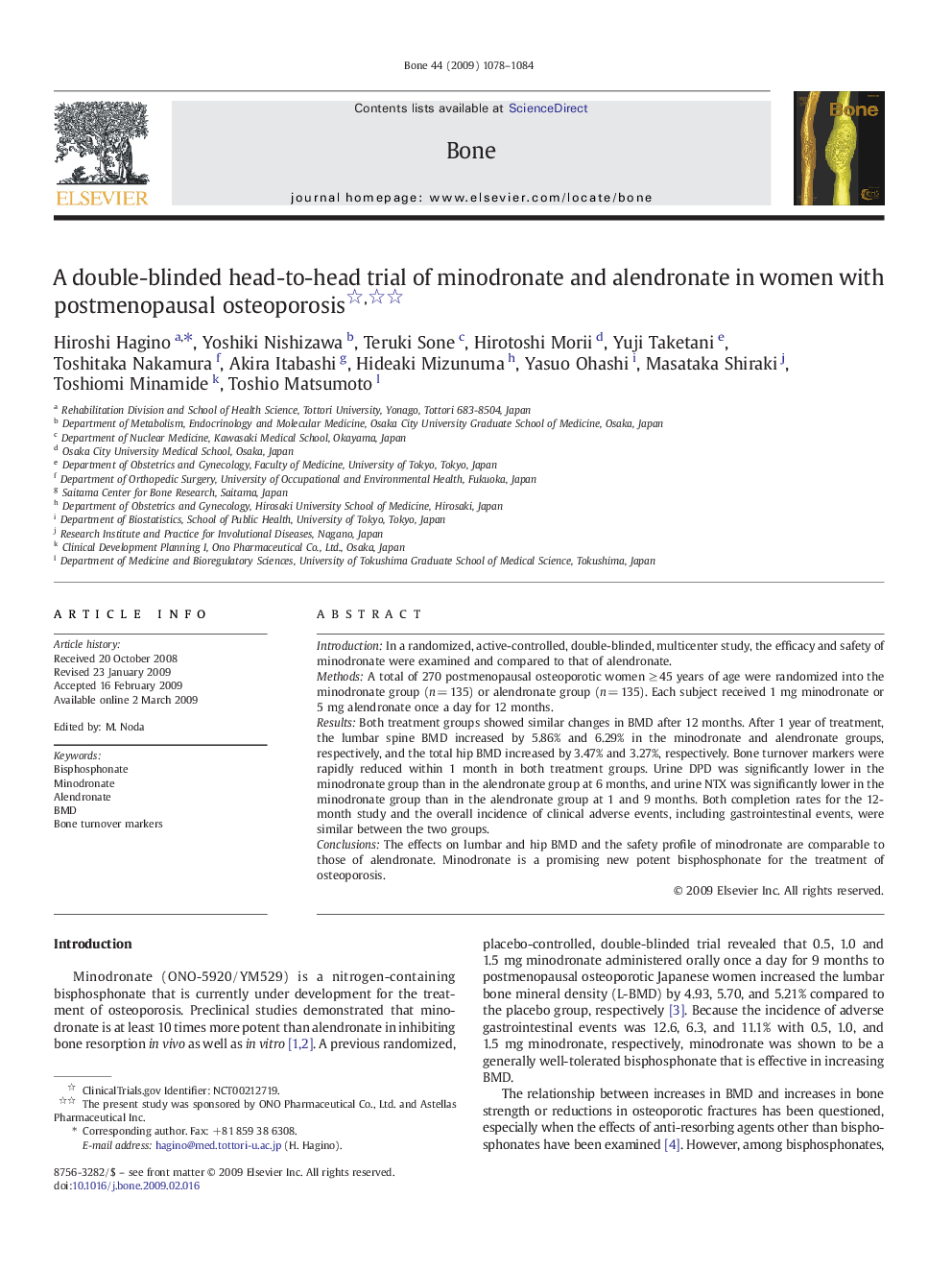| Article ID | Journal | Published Year | Pages | File Type |
|---|---|---|---|---|
| 2780833 | Bone | 2009 | 7 Pages |
IntroductionIn a randomized, active-controlled, double-blinded, multicenter study, the efficacy and safety of minodronate were examined and compared to that of alendronate.MethodsA total of 270 postmenopausal osteoporotic women ≥ 45 years of age were randomized into the minodronate group (n = 135) or alendronate group (n = 135). Each subject received 1 mg minodronate or 5 mg alendronate once a day for 12 months.ResultsBoth treatment groups showed similar changes in BMD after 12 months. After 1 year of treatment, the lumbar spine BMD increased by 5.86% and 6.29% in the minodronate and alendronate groups, respectively, and the total hip BMD increased by 3.47% and 3.27%, respectively. Bone turnover markers were rapidly reduced within 1 month in both treatment groups. Urine DPD was significantly lower in the minodronate group than in the alendronate group at 6 months, and urine NTX was significantly lower in the minodronate group than in the alendronate group at 1 and 9 months. Both completion rates for the 12-month study and the overall incidence of clinical adverse events, including gastrointestinal events, were similar between the two groups.ConclusionsThe effects on lumbar and hip BMD and the safety profile of minodronate are comparable to those of alendronate. Minodronate is a promising new potent bisphosphonate for the treatment of osteoporosis.
